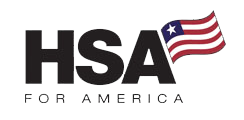Most construction workers overpay for health insurance, or worse, pay for plans that barely work when they need them.

Between unpredictable hours, seasonal income, and job-site risks, the typical 9-to-5 insurance model just doesn’t fit. Too often, people end up with sky-high premiums, steep deductibles, and limited doctor networks that leave them paying out of pocket anyway.
But there are better options. In this guide, we’ll show you how to find affordable health coverage that actually works for your lifestyle. You’ll learn how to:
- Cut your monthly costs without sacrificing protection.
- See your doctor (and take your kids to theirs) without meeting massive deductibles or surprise copays.
- Use a Health Savings Account (HSA) to set aside tax-free money for medical expenses, and build a financial safety net for your family.
We’ll walk through the plans that make sense for tradespeople, from flexible high-deductible options paired with HSAs to community-based sharing programs and short-term coverage between jobs. By the end, you’ll know exactly how to get quality care, protect your income, and stop wasting money on insurance that doesn’t fit.
Why Construction Workers Struggle to Find Affordable Health Insurance
Health insurance was designed around steady salaries and employer benefits, not job sites and project-based work.
One report found nearly 24% of construction workers didn’t have any health insurance in 2018 – double the average uninsured rate across the country.
Independent contractors and small crew owners also don’t have the support of employer plans. They shoulder the full cost of premiums themselves, and irregular income makes those fixed monthly bills risky; miss a payment, and coverage disappears.
Job-site risk drives costs up, too. Construction has one of the highest injury rates, and individual plan deductibles can exceed $9,200 for single coverage in 2025.
Coverage gaps add another layer. When projects end or work slows, switching plans can mean going uninsured. These hurdles push many to skip insurance or settle for overpriced plans.
Health Insurance for Construction Workers: Common Options
Getting health insurance for construction workers is complicated, but not impossible.
There are plenty of options to consider, each with their own benefits, and trade-offs.
ACA Marketplace Plans
Marketplace plans created under the Affordable Care Act guarantee acceptance, even with pre-existing conditions.
They’re affordable when income is unpredictable, since premium tax credits scale with what you earn. For instance, a single filer earning about $35,000 could see a Silver plan drop from around $600 to closer to $250 per month once subsidies apply.
Pros:
- Full coverage, including preventive care, prescriptions, and major medical needs
- Subsidies help when income fluctuates or drops mid-year
- Special enrollment periods available if other coverage ends
Cons:
- Premiums can still be high without subsidy help
- Deductibles keep rising in 2025 and 2026
- Incorrect income estimates can lead to repaying part of the subsidy at tax time
High-Deductible Health Plans (HDHPs) + HSAs
HDHPs trade higher deductibles for lower monthly costs.
Pairing one with a Health Savings Account (HSA) lets workers save pre-tax dollars for medical expenses. In 2025, HSA limits are $4,300 for individuals and $8,550 for families.
Pros:
- Lower monthly premiums than traditional plans
- HSAs grow tax-free and roll over every year
- Flexible for variable income; contribute more in busy months, less in slow ones
Cons:
- You pay medical bills until the deductible is met
- Works best if savings can cover surprise costs
Health Sharing Plans
For an alternative to traditional health insurance for construction workers, health sharing plans are popular.
These are member-based programs where participants pool money to pay large medical bills. They aren’t insurance but can cost 40–60% less each month than ACA plans.
Pros:
- Often the cheapest monthly option
- Simple structure; many include telehealth or pharmacy discounts
- Community feel appeals to many tradespeople
Cons:
- No legal guarantee bills will be covered
- Pre-existing conditions can face waiting periods or limits
- Not ACA-compliant, so no subsidies or certain protections
Short-Term Health Insurance
Short-term policies act as temporary protection between projects or while waiting for a new job’s benefits.
Monthly premiums are often lower, but the benefits can be limited. Plus, protection for pre-existing conditions isn’t always guaranteed.
Pros:
- Quick to get – approval in days, sometimes next-day coverage
- Far cheaper than COBRA for short gaps
Cons:
- Limited benefits and no protection for chronic or pre-existing conditions
- Not ACA-compliant and may leave significant gaps if used long term
Professional or Trade Association Plans
Some trade groups, unions, or chambers of commerce offer group health plans to members.
The benefits offered by these plans vary, and they can provide more predictable pricing and stronger networks. However, they’re not available to everyone.
Pros:
- Group rates can be better than buying alone
- Plans may address industry-specific needs and injury risks
Cons:
- Membership dues or eligibility requirements apply
- Availability varies by trade and state
Why HSAs Are the Ideal Health Insurance for Construction Workers
Construction work comes with two constants: unpredictable income and a real chance of injury.
A Health Savings Account (HSA), paired with a high-deductible health plan, can help with both. It offers:
- A Simple but Powerful Tax Break: Every dollar put into an HSA is deductible, the money can grow tax-free, and withdrawals for qualified medical expenses aren’t taxed. That means fewer taxes now and more savings for care later. In 2026, the IRS will allow up to $4,400 for individual coverage and $8,750 for a family.
- Seasonal Cash Flow Fit: Contract work often means busy stretches followed by lean months. An HSA doesn’t require steady contributions; you can save aggressively during strong income periods and pause when work slows. The balance rolls over each year, so nothing disappears if you don’t spend it.
- Preparation for Real-World Medical Costs: Job-site accidents lead to ER visits, imaging, surgery, and rehab. HSAs can pay those bills, but they’re also useful for everyday expenses like prescriptions, dental work, and eye exams. It’s essentially a medical emergency fund that you own.
- Future proofing: Unused HSA funds stay invested and can be carried into retirement. After age 65, you can use the money for any purpose – non-medical withdrawals are taxed as income but avoid penalties.
Pairing a high-deductible plan with an HSA keeps monthly premiums lower while building a reserve that’s there when injuries or big bills hit. It’s one of the most flexible ways for contractors and small construction business owners to stay protected without overpaying.
Health Sharing: A Cost-Effective Alternative
For many people looking at health insurance for construction workers, traditional insurance feels overpriced and rigid.
Health sharing programs offer another type of health coverage for contractors, one that can cost far less each month while still protecting against large medical bills.
Members of a health sharing program pay a set monthly amount into a common fund. When someone faces a significant medical expense, such as surgery after a job-site injury, the group helps cover the bill. These plans are not legally insurance, but they operate on the idea of sharing costs within a community.
Many turn to health sharing as an alternative to independent contractor health insurance for a few reasons:
- Lower monthly cost: Contributions are often 40–60% less than ACA premiums.
- Simple structure: Many include telehealth visits and prescription discounts.
- Community mindset: Appeals to workers who like the idea of looking out for one another.
Still, there are limitations. Reimbursements depend on the programs rules, pre-existing conditions may have waiting periods, and some options require members to agree to lifestyle guidelines. Plus, programs are not ACA-compliant, so there’s no subsidy help or federal oversight.
Health sharing tends to work for healthy individuals or families who mainly want protection from large, unexpected costs. It can be a smart option for independent contractors who don’t qualify for big ACA subsidies but want something cheaper than full insurance.
Compare Pricing on the Best HealthShare Plans Available
Health Coverage for Contractors: What You Need
Job sites come with real risks.
Solid health coverage for contractors should cover more than just a hospital stay. It has to handle the kinds of injuries and care that keep tradespeople off the clock.
- Emergency treatment: Ambulance rides, ER visits, and overnight stays if you’re hurt on site
- Surgery and hospital bills: Broken bones, back repairs, and other big-ticket fixes that can run tens of thousands
- Imaging and diagnostics: X-rays, CT scans, MRIs – almost every serious injury starts here (and they’re pricey)
- Prescription drugs: Pain meds, antibiotics, anti-inflammatories; easy to overlook until you’re staring at the pharmacy bill
- Rehab and physical therapy: Getting back to work safely often means weeks of PT – coverage matters.
- Preventive care: Checkups, vaccines, early screenings. Cheaper to stay ahead of problems than fix them late.
Add-ons worth a look:
- Accident insurance: cash you can use to meet a high deductible or cover bills while you’re out.
- Dental and vision: often missing from basic medical plans but important if you’re self-employed.
- Short-term disability: helps replace income if you’re sidelined for a while.
How to Choose the Right Plan for Your Situation
Picking the right health insurance for construction workers isn’t about finding the lowest premium on a list.
It’s about knowing how much risk you can shoulder and what you really spend when you’re hurt or sick.
Look at Your Own Situation
- Health right now: No chronic issues? A high-deductible plan might make sense. Ongoing meds or doctor visits? Lean toward stronger coverage.
- Income swings: Busy summer, slow winter? You’ll want a plan with predictable costs and the option to save when cash is good.
- Family on the plan: Kids mean more doctor visits, prescriptions, and surprises. Build that into your math.
- Comfort with risk: Picture a serious injury tomorrow. Could you write a check for your deductible and coinsurance?
Do the Math Before You Pick
- Add up the annual premium.
- Check the deductible and the out-of-pocket max – this is your worst-case bill.
- Estimate routine care: doctor visits, prescriptions, labs.
- See if an HSA can cut taxes and build a cushion.
Ask These Questions
- Are the doctors and hospitals I’d actually use in network?
- What’s my cost if I need surgery or a long hospital stay?
- If my income drops midyear, can I update it to keep subsidies?
- How does the plan handle rehab or physical therapy?
Looking at premiums alone can be misleading. The real cost is what you’ll pay if something goes wrong plus what you spend to stay healthy. Laying out the numbers first keeps you from overpaying or being caught off guard.
Start Your Coverage Today
Don’t wait until you’re hurt to figure out coverage.
Marketplace open enrollment runs from early November through mid-January. If you lose other insurance, get married, or have a baby, you may qualify for a special enrollment period. Short-term plans can start almost anytime and are useful when work slows or while waiting for new coverage.
Figure out your income for the year as honestly as you can. Update it if jobs dry up so subsidies stay accurate and you don’t face a surprise tax bill later. When you compare plans, look past the premium – the deductible, out-of-pocket maximum, and prescription coverage matter just as much.
Choose a high-deductible plan? Open a Health Savings Account as soon as coverage starts. Contribute more when business is good and use the funds tax-free for medical bills.
If you need help figuring it all out, a licensed advisor who understands the construction industry can compare plans and guide you through enrollment. You can also explore Health Share plans built for self-employed workers or check our Short-Term Health Insurance Guide.




